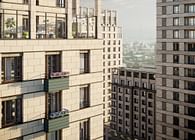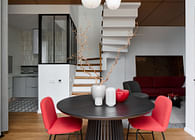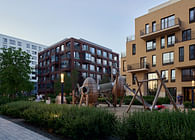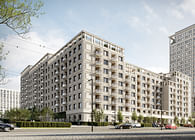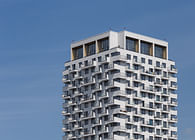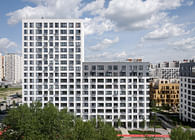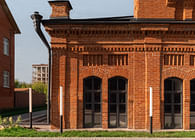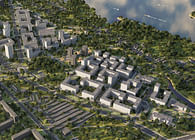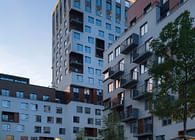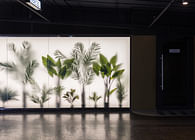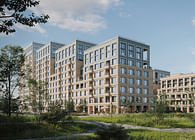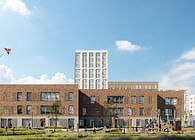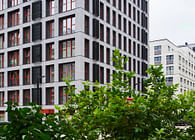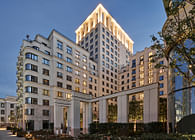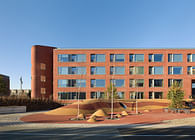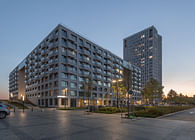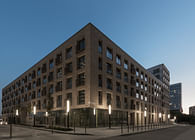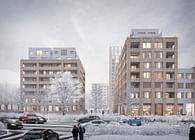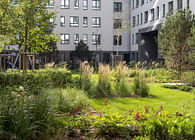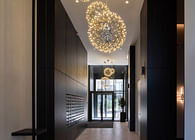
Tikhoye lake is located in Russian town Tyumen, in Siberia, near a residential area project designed by the development company Brusnika. A small, shallow and boggy Tikhoye lake was much wider up to the 1970s, but affected by chaotic urban development, it gradually shrank. As a result, while working on the residential area, it was decided to restore the reservoir and landscape its shoreline, thus linking the new quarter to the lake shore.
The project team divided the revitalisation process into several stages. The initial step comprised ecological evaluation of the lake, its water and soil. This was accomplished by Brusnika in collaboration with the The State Agrarian University of The Northern Trans-Urals, the Russian Ecology Society and ECOSTANDARD Group. Based on the results of the research, recommendations concerning biodiversity, shoreline stabilisation, dredging and fish stocking were formulated and a strategy to restore the natural site was developed.
According to research, the lake lost connection to the river due to chaotic real estate development in the 1990s and early 2000s. Its area shrank considerably and the shores became waterlogged. Brusnika sprang into action by cleaning the basin and the shores from litter, dead wood and decaying plants. The next step was to remove silt from the bottom of the lake. In order to achieve this, an artificial dam between the silted and good parts of the lake was constructed. By pumping 26 000 cubic metres of water from one part to another, 20 000 cubic metres of sediment were removed, which resulted in deepening the lake from 1.4 to 2.5 metres. The surface area of 2.7 thousand square metres remained stable. After clearing the lake bottom, supporting walls were erected in order to prevent erosion, resulting in a better defined, oval water surface.
The second phase of lake revitalization involves its afforestation. The lake's area was filled with a variety of plants cascading down to the water's edge—willows, elms, poplars, birches, barberries, elderberries, reeds, cane, brooklime, bulrushes, and sedges. Floating bio-platforms made of wetland plants are responsible for enriching the water with oxygen and maintaining the biodiversity of the natural site. These platforms will become nesting sites for birds and a food source for fish.
The third stage of revitalisation involves the creation of a park with pedestrian and bicycle paths. Around the lake and on the territories adjacent to it, Brusnika projects will feature rain gardens (currently, specialists have laid the foundation for them). These gardens will filter stormwater runoff and direct it into the reservoir.
The landscaping concept is aimed to minimise man-induced stress for the lake and create dedicated recreational isles. According to the project, the park starts with a small square and a wooden amphitheatre descending right to the shore. A sun loungers and picnic sites are located next to it. Wooden vantage points complete with benches are conceived along the shoreline with a pedestrian bridge crossing the lake in its widest point. The lake could be transformed into a skating rink in winter. In order to support biodiversity and preserve birds’ breeding ground, the lights in the park are kept to a minimum. Targeted lighting of pedestrian paths will curb light pollution and make evening walks comfortable.
As well, Brusnika is planning to install interactive stands along the coastline with information about the flora and fauna of the lake and organize a walking educational route for children.
The final stage of lake revitalization is fish stocking. In the spring of 2024, approximately 50 kg of carp and 100 kg each of silver carp and bighead carp were released into Tikhoye Lake. Prior to the fish stocking, specialists conducted relevant studies, measured the depth, created a lake map, collected water samples, and determined which species would best adapt to the conditions. Carp, silver carp, and bighead carp complement each other and aid in their survival. Carp digs the bottom and eats everything on it, uprooting vegetation. Silver carp, or water cow, eats grass and algae, picking up what the carp leaves behind. Bighead carp, the lake's sanitation worker, swims with its mouth open, collects everything in the water column, and filters the water.
The fish were brought from a hatchery in special containers that maintain the necessary conditions and supply oxygen. On-site, specialists measured the temperature of the lake, then gradually adjusted the temperature in the container to match, ensuring the relocation process went as smoothly as possible. The fish's winter survival was also planned: natural and artificial gas exchange in the lake will be ensured by cutting holes in the ice and conducting mechanized aeration. This process, necessary during the cold season, is carried out once a month.
Along with the fish, microalgae Chlorella were released into the lake. They produce a lot of oxygen and serve as the best protein food for the fish, allowing them to grow 30% faster. Additionally, Chlorella consumes pathogens and blue-green algae, neutralizing the lake's bloom. To eliminate organic residues in the lake, a biopreparation for bottom sediments is used. Specialists plan to reduce the level of hydrogen sulfide and eliminate the unpleasant odor from the water.
The revitalization process is planned to be completed by autumn 2024. After this Brusnika will retain patronage of the lake through seasonal monitoring. Specialists will monitor the thickness of the ice cover, control the level and quality of water during spring floods and summer droughts, check the state of fauna, avifauna and bioplateaus, flowering of aquatic plants and the integrity of the coastline. This will improve the efficiency of the measures taken and make the reservoir a significant recreational facility and eco-island of the city with high natural biodiversity. After restoration and natural self-purification of the reservoir, in approximately 3-5 years, amateur fishing will be possible on it.
Tikhoye Lake exemplifies the revitalisation of a water body with subsequent waterfront development. This project seamlessly combines several functions: namely, educational, ecological, and recreational, redefining the area as the ‘third place’.
Status: Built
Location: Tyumen, RU
Firm Role: Developer and architect
Additional Credits: Project team
Ecological research — The State Agrarian University of the Northern Trans-Urals, the Russian Ecology Society, ECOSTANDARD Group
Landscape design — Novascape, Brusnika Design
Development and landscape — Brusnika
Photo — Alexander Saskov, Maxim Loskutov
Surface area — 2700 m²
Water volume — 18 000 m³
Lake depth — 2,5 m
40 000 trees
100 000 shrubs
54 000 wetland plants
Research — 2020
Project — 2020-2021
Completion — 2021-2024






